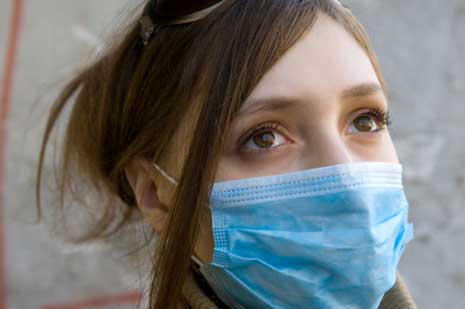Professor urges us to take people with chemical sensibility into account
Yesterday (Feb 2, 2010), in an independent student newspaper from the University of New Hampshire, a professor of chemical engineering appealed to the community to take “Canaries” into account regarding the use of chemicals and especially scents. He spoke of those persons who suffer from Chemical Sensitivity and who have to be seen – like those former canaries in mines – as indicators for toxic chemicals.
Some American and Canadian Universities have a “Scent Free Policy” which means that the use of perfumes and products containing scents is prohibited within these Universities. All visitors have to meet this policy. It allows students with allergy and chemical sensitivity to work and study.
Professor Ihab Farag, Chemical Engineering Department:
Many of us are familiar with canaries, the beautiful, colorful birds that tend to sing most of the time. Canaries also saved many human lives in coalmines. This is because canaries are much more sensitive to toxic gases than humans. Miners would take canaries with them in the coalmine. If the canary stopped singing and fell (or died), the miners knew to leave the coal mine quickly to safety.
There are individuals who have developed a very strong sensitivity to many common chemicals. These people can be very negatively affected and irritated by fumes, chemical cleaners, disinfectants, cigarette/cigar smoke, engine exhaust, solvents, etc. These people are often called “Human Canaries” of the modern world, because of the chemical sensitivity similarity to that of Canaries. Human Canaries of the 21st century tend to be very strongly irritated by everyday chemicals like perfumes, hair products, shampoos, shower gels, after shave lotions, antiperspirants, deodorants, hand sanitizers, chap sticks, finger nail polish, etc. Human canaries look the same as other people, and when you see one you probably will not recognize he or she is a human canary until an offensive toxic chemical triggers his or her sensitivity.
Please be considerate to human canaries and help them to enjoy life to the fullest. One way you can help the human canary and at the same time lower your exposure to undesirable chemicals, is to go fragrance-free: avoiding perfumes, and fragranced personal care products.
Author: Silvia K. Müller, CSN – Chemical Sensitivity Network, February 2, 2009
Reference:
Chemical consideration to the Human Canaries, Ihab Farag, Professor, Chemical Engineering Department, Letter to the editor 02-02-10, The New Hampshire, Independent Student Newspaper at the University of New Hampshire since 1911, Februar 2, 2010





